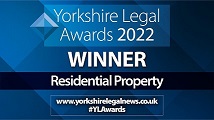Speak to a specialist solicitor at our law firm in North Yorkshire.
Green leases for commercial property and the new model clauses
The idea of ‘green’ leases for commercial property is rising up the agenda as policies push all parts of the economy towards net zero, but many commercial landlords and tenants do not really know what a green lease should contain, and who should pay for improvements. A new set of model clauses published by the Better Buildings Partnership may help.
Lots of clients want to do their bit to reduce the carbon impact of their buildings but do not really understand what a green lease is. All we really mean is that a lease contains clauses in which the landlord and the tenant agree to act in ways that will have a positive rather than a negative impact on the environment.
Why make your leases green?
If you are a commercial landlord, there are a range of reasons to make your leases greener. You may want to act on your own concerns about climate change. If you need to borrow money to invest in commercial property, your lender is increasingly likely to ask about the green credentials of your business and any property on which they are lending. If you are a commercial tenant, you may be willing to pay more rent for a ‘greener’ property because it will boost your brand reputation in the eyes of your customers and clients, and may even help meet procurement criteria. Underpinning it all is government policy, both in the planning system and in relation to energy efficiency, energy production and reuse and reduction of resources.
Shades of green
The new Green Lease Toolkit, published by the Better Buildings Partnership, combines model clauses with useful explanations. This is very helpful in demystifying what can be a complex and confusing area. The toolkit gives light, medium and dark green alternatives for most clauses, which means each lease can be tailored to reflect how far you are willing to go to be more environmentally friendly.
The yielding up clause, which sets out how the tenant must leave the property when the lease ends, is a good example. Traditionally, the tenant would have to remove all alterations made during the term, only for the next tenant to spend time and money putting something very similar back. There is a potential waste of resources here, so this is a useful area for green drafting.
- The light green approach is that the landlord must consider any adverse impact that the tenant removing alterations will have on environmental performance and tell the tenant in advance which alterations may be left in place. The tenant must use reasonable endeavours to minimise waste to landfill and salvage as much as possible.
- The medium green version adds an obligation for the tenant to share waste data with the landlord and comply with any waste policy the landlord has in place.
- The dark green version adds an obligation to agree a waste recovery plan in advance and to achieve a salvage target.
Other common green clauses
Several other areas of a commercial lease lend themselves easily to green clauses which have been growing in popularity for a number of years. These include:
- Tenant alterations – limiting the tenant’s right to make alterations that could adversely affect the environmental performance of the building and making it easier to carry out alterations that improve it.
- Energy Performance Certificates (EPCs) – preventing the tenant from doing anything to adversely affect the building’s EPC rating, and giving the landlord control over when and how EPC assessments are carried out, to make sure they are always of a high quality.
- Agreements by landlord and tenant to cooperate to improve the environmental performance of the building, either in general terms for a light green approach or with specific targets in mind for a darker green. This is often linked to a commitment to take part in an environmental forum to bring together the landlord and all the tenants.
Less common green clauses
As green lease drafting gets a higher profile, new types of clause are emerging. Because they are less well understood, and in some cases more onerous, these clauses tend to be more heavily negotiated. Examples include:
- Rights for the landlord to carry out works to improve environmental performance without the need for tenant’s consent. This is driven by the landlord’s obligation to make sure the property meets Minimum Energy Efficiency Standards (MEES). The drafting usually says the landlord must pay for these works and cannot recover the cost through the service charge.
- Rights for the landlord to install meters and obligations for landlord and tenant to share data on usage of energy and water, and on waste produced.
- Obligations on the landlord and tenant to use the building sustainably, in a way that minimises consumption of energy and water. In some cases, this also extends to the social impact of the building.
- Obligations on the landlord and tenant to procure renewable electricity, in some cases acknowledging that this may not be the cheapest option. The darker green version refers to using renewable energy generated on-site where that is possible.
Limits on enforcing green obligations
There is one key problem with some green lease terms, which is that some can be difficult to enforce.
Where there is a clear and measurable obligation (for example not making any alterations that adversely affect the EPC rating) it is obvious when there has been a breach and what must be done to put it right. In contrast, many of the greener clauses rely on landlords and tenants doing things which are less easy to measure, like cooperating and using reasonable endeavours to minimise resources consumed and waste produced.
For a long time, the commercial property industry saw this as a reason not to embrace green drafting but that view is changing. We are now at a point where many landlords and tenants accept that having green intentions set out in their leases is worthwhile, even if some of them may be tricky to enforce.
How we can help
If you would like some help navigating the new world of green leases and net zero, talk to our commercial property lawyers.
This article is for general information only and does not constitute legal or professional advice. Please note that the law may have changed since this article was published.

















